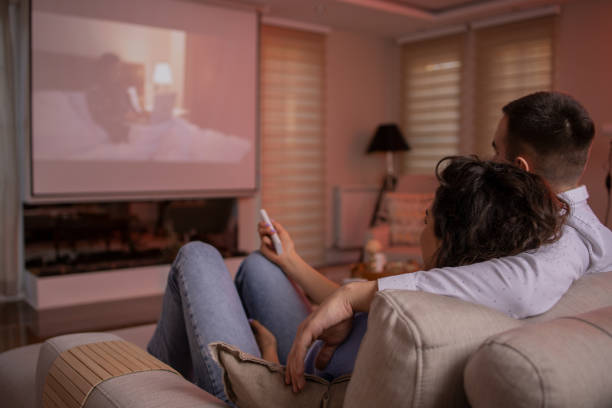Creating your own home theater system can elevate your movie-watching experience to a whole new level. From investing in quality equipment to strategic placement, this guide will help you set up your home theater system correctly and efficiently.
Choosing the Right Equipment

The foundation of your home theater system is the equipment you choose. Start by selecting a high-definition television or a projection screen. Consider the size of your room and the distance from where you’ll be viewing. A larger screen is ideal for more spacious rooms, while a projector might be a better fit for small spaces.
Next, invest in a quality sound system. A surround sound system with at least five speakers and a subwoofer is recommended for an immersive audio experience. Don’t forget an AV receiver to act as the hub for your inputs and outputs. Additional devices like Blu-ray players, streaming devices, and gaming consoles can enhance your entertainment options.
Optimal Speaker Placement
Placing your speakers correctly can make or break your home theater experience. Start with the center speaker, which should be placed directly below or above your screen. This speaker delivers most of the dialogue, so its placement is crucial for clarity.
The left and right front speakers should be positioned at equal distances from the center speaker, angled towards your main seating area. Surround speakers should be placed to the sides or behind your seating area to provide depth and realism to the audio. Lastly, place the subwoofer in a location where it can deliver balanced bass without overpowering the other sounds.
Calibrating Your System
Proper calibration ensures that your home theater system performs at its best. Most AV receivers come with auto-calibration tools, which simplify the process. However, manual calibration might be necessary for more advanced setups.
Start by adjusting the speaker levels. Use a sound level meter to ensure each speaker’s output matches. Next, adjust the speaker distances to synchronize the audio with your visual content. Finally, fine-tune the equalizer settings to balance the bass, midrange, and treble frequencies.
Arranging Your Seating
Your seating arrangement is another crucial factor for an optimal home theater experience. The goal is to ensure everyone has an unobstructed view of the screen and is within the ‘sweet spot’ for the surround sound. Consider using tiered seating if your space allows for it, as this can provide an unobstructed view for multiple rows.
A common guideline is to place the primary seating at a distance of 1.5 to 2.5 times the screen’s diagonal size. For instance, if you have a 60-inch screen, seating should be placed between 90 to 150 inches away. For smaller rooms, opt for seating that maximizes comfort without crowding the space.
Connecting Your Devices
Once your equipment and seating are in place, it’s time to connect your devices. Start by connecting your TV or projector to the AV receiver using HDMI cables. Ensure that all your input devices like Blu-ray players, streaming devices, and gaming consoles are connected to the AV receiver as well.
Next, connect your speakers to the AV receiver. Usually, color-coded terminals will help you with accurate connections. Power on all your devices and go through the initial setup guided by the on-screen menus for your AV receiver and other devices.
Conclusion
Setting up a home theater system can be a rewarding endeavor, offering a cinema-like experience in the comfort of your own home. By selecting the right equipment, ensuring optimal placement, calibrating your system, arranging your seating thoughtfully, and connecting your devices correctly, you can create an entertainment hub that the whole family will enjoy. Take your time to fine-tune the setup to meet your personal preferences, and soon you’ll be hosting movie nights like a pro.
FAQs
What equipment do I need to set up a home theater system?
At a minimum, you will need a high-definition TV or projector, an AV receiver, a surround sound system with at least five speakers and a subwoofer, and input devices like a Blu-ray player or streaming device.
How should I place my speakers for the best sound experience?
Place your center speaker directly below or above the screen. Front left and right speakers should be positioned at equal distances from the center, angled towards the seating area. Surround speakers go to the sides or behind the seating area, and the subwoofer should be placed in a position that delivers balanced bass.
Do I need special cables for my home theater system?
HDMI cables are the standard for connecting most modern home theater components. Speaker wires, optical cables, and audio cables may also be required depending on your specific setup.
How do I calibrate my home theater system?
Most AV receivers come with auto-calibration tools. For manual calibration, adjust speaker levels using a sound level meter, set speaker distances for audio synchronization, and fine-tune the equalizer settings to balance frequencies.
What is the ideal distance for seating in a home theater?
A common guideline is to place seating 1.5 to 2.5 times the screen’s diagonal size. For a 60-inch screen, this would mean placing seating between 90 to 150 inches away. Ensure that the seating offers an unobstructed view and is within the ‘sweet spot’ for surround sound.



